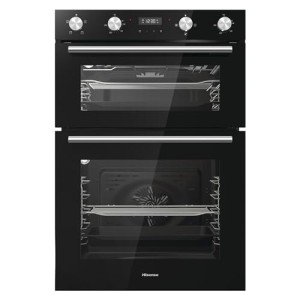Fitted Ovens: A Complete Guide to Choosing and Installing
Fitted ovens have become a staple in contemporary cooking areas, mixing functionality with visual appeal. Their seamless integration into kitchen cabinetry not just conserves area however also raises the total design of the kitchen. This article explores what fitted ovens are, the various types available, their benefits, and how to choose the right one for your requirements. Additionally, it addresses typical questions through an extensive FAQ area.
What is a Fitted Oven?
Fitted ovens are built-in appliances developed to be set up within kitchen cabinets, providing a streamlined, cohesive look. Unlike freestanding ovens, which stand alone and can be moved, fitted ovens offer a more long-term choice, permitting much better design combination and optimized use of kitchen space. They can be found in different setups, sizes, and styles to fit varied kitchen styles and cooking requirements.
Kinds Of Fitted Ovens
Fitted ovens can be found in several types, each catering to different cooking designs and choices. Here's a breakdown of the most common choices:
| Type of Fitted Oven | Description |
|---|---|
| Single Oven | A standard oven that offers one cooking compartment. Suitable for smaller cooking areas or those with minimal cooking requirements. |
| Double Oven | 2 ovens stacked vertically, permitting synchronised cooking at different temperature levels. Perfect for large families or entertaining. |
| Microwave Combination Oven | Integrates microwave and conventional oven functions, using speed and adaptability for modern-day kitchen areas. |
| Steam Oven | Uses steam for cooking, protecting nutrients and improving tastes. Great for health-conscious cooks. |
| Wall Oven | Installed at eye level, making it much easier to gain access to and display cooking. Functions well in ergonomic kitchen designs. |
Benefits of Fitted Ovens
Fitted ovens offer many advantages that make them a popular choice for many property owners. Here are some essential advantages:
1. Area Efficiency
Fitted ovens are created to maximize kitchen area, permitting more maneuverability and design flexibility. They can be integrated into custom cabinets, making them an excellent choice for smaller sized cooking areas.
2. Seamless Aesthetic
A fitted oven adds to a refined and cohesive kitchen style. When integrated well, it can complement kitchen cabinetry and countertop products, producing a sophisticated and expert appearance.
3. Improved Functionality
Numerous fitted ovens featured advanced functions, such as self-cleaning cycles, wise innovation, and multiple cooking modes. This boosts cooking flexibility and can make meal preparation more efficient.
4. Improved Accessibility
Wall ovens, in particular, are developed to be set up at a height that minimizes bending or stooping. This can be particularly useful for those with movement concerns or anyone who prefers a more ergonomic kitchen design.
5. Customization Options
Fitted ovens can be tailored to private choices with numerous finishes, colors, and styles, permitting property owners to pick a model that meets their specific requirements and complements their kitchen design.
Picking the Right Fitted Oven
When thinking about a fitted oven, several aspects should be taken into account to guarantee the very best option for your kitchen:
- Size: Measure the space readily available for your oven precisely, considering not only the width and height however likewise the depth to guarantee it fits comfortably within your kitchen cabinetry.
- Cooking Style: Assess your cooking routines-- whether you prefer baking, roasting, or steaming. Choose an oven that lines up with your main methods of cooking.
- Functions: Look for specific functions that deal with your cooking style. For circumstances, if you're an avid baker, a design with precise temperature level control may be essential. In addition, think about models with clever innovation for remote gain access to and tracking.
- Budget plan: Fitted ovens can range greatly in rate. Develop a budget plan beforehand and consist of setup costs, which may need professional help for optimal results.
- Energy Efficiency: Look for energy-efficient designs that assist in saving on utility expenses while reducing your environmental effect.
Installation Considerations
Installing a fitted oven usually requires professional support for appropriate alignment and connection to power sources. Some vital considerations throughout setup include:
- Ensuring correct ventilation
- Checking for adequate electrical and plumbing connections (if suitable)
- Ensuring the surrounding cabinets can support the oven's weight.
Frequently Asked Questions About Fitted Ovens
Q1: Can I install a fitted oven myself?
A: While it is possible to set up a fitted oven yourself, it is highly advised to seek expert setup to make sure safety, right sizing, and compliance with local codes.
Q2: Are fitted ovens simple to clean up?
A: Many fitted ovens come with self-cleaning functions or easy-to-clean interiors. Always refer to the producer's recommendations for maintenance to keep your oven in prime condition.
Q3: Can I replace a standard oven with a fitted oven?
A: Yes, a fitted oven can replace a conventional freestanding oven. Nevertheless, ensure that a knockout post and installation requirements line up with your existing kitchen layout.
Q4: How do I keep a fitted oven?
A: Regular maintenance consists of cleaning up the oven's interior, inspecting gaskets, examining seals, and guaranteeing that all components are operating correctly. Constantly follow the maker's guidelines for upkeep treatments.
Q5: Are there specific brand names known for quality fitted ovens?
A: Some brand names understood for quality fitted ovens consist of Bosch, Samsung, Whirlpool, and Miele. Research and read reviews to find a brand name that fits your requirements and preferences.
Fitted ovens are an exceptional alternative for those aiming to boost their kitchen's functionality and style. With numerous types, designs, and includes available, it's essential to think about individual cooking habits, space preferences, and installation requirements. By understanding the options and benefits available, homeowners can make educated choices that will elevate their cooking experience and improve their kitchen aesthetics. Investing in a fitted oven is not merely a purchase; it is an enduring enhancement for any kitchen.

